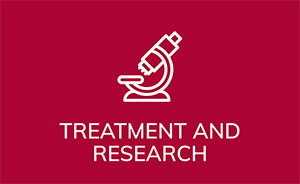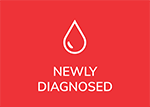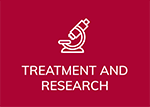The early result of the clever IMPROVE trial with its complicated design were presented at the 2021 European Hematology Association Virtual Congress, (EHA 2021) by Dr. Scarfò and her colleagues from Milan, Italy.
Background:
The design of this trial was to use as much medication as necessary but as little as possible to get relapsed/refractory (R/R) chronic lymphocytic leukemia patients to uMRD (undetectable measurable (minimal) residual disease) so they can stop therapy.
Methods:
- VEN as monotherapy (up to usual 400 mg/day) was administered for twelve months.
- MRD status in peripheral blood (PB) and bone marrow (BM) was evaluated after eleven 28-day cycles of VEN.
- Those who were uMRD in both the PB and BN at 11 months discontinued VEN at C12D28 (C12D28 is short hand for twelve 28-day cycles, day 28 of the 12th cycle).
- For patients with detectable MRD in PB and/or BM, IBR 420 mg/day was added from C13D1 and continued with both VEN and IBR taken up to C24D28, uMRD, progression or toxicity, whichever came first.
- After C24D28, patients with persistent detectable MRD, but responding, stopped the VEN an continued IBR alone.
- The primary endpoint was uMRD4 (<1 CLL cell in 10-4 leukocytes) in both PB and BM.
Results:
- 38 pts started VEN.
- 61% were previously treated with FC+/-R
- 8/33 or 24% carried del(17p),
- 10/30 (33%) had TP53 mutations,
- 24/30 (80%) had unmutated IGHV.
- Overall response rate (ORR) with VEN as monotherapy was 36/38 (95%) with 19 complete responses (CR) and 17 partial responses (PR).
- 17 pts (45%) with uMRD4 in PB and BM at C12D1 discontinued VEN at C12D28.
- The remaining 19 (55%) responsive cases with detectable MRD at C12D1 added IBR to VEN from C13D1.
- By combining IBR and VEN for a median of 7 months (range 3-10) 5/10 pts in PR improved their response to CR and 16/19 (84%) were able to achieve uMRD4 in both PB and BM thus able to stop both therapies.
- The remaining 3/19 continued IBR.
- After a median follow up of 30 months, median progression free survival (PFS) has not been reached.
- 2 pts developed Richter transformation.
- 11/33 pts (33%) who discontinued treatment in uMRD, after a median observation of 30 months remain uMRD (6 treated with VEN only).
- No cases of clinical and/or laboratory tumor lysis syndrome were reported
- Adverse events were mild, with no discontinuations or dose reductions; with prolonged follow-up no new relevant toxicities occurred.
Conclusions:
A sequential personalized MRD-guided approach led to an overall uMRD in 33/38 pts (87%). Of note is that 84% of pts who did not achieve uMRD after VEN alone obtained uMRD after the addition of IBR. Only three patients went on to require continuous IBR therapy.
Quoting the authors: “This MRD-driven sequential approach allows to reach identical depth of response in each patient enrolled in the study using a personalized intensification avoiding unnecessary drug exposure, ultimately identifying the few pts that may benefit from continuous IBR”.
As we know in CLL, one size does not fit all, and this approach can help many patients while minimizing drug exposure. Whether these are the best two drugs to use and if there is a role for adding in a third drug, likely a monoclonal antibody such as obinutuzumab, will need more research to sort out, but I like the direction of this type of this small but creative study.
Here is the link to the EHA 21 abstract where you can read more details from the trial.
Stay strong. We are all in this together.
Brian
Brian Koffman MDCM (retired) MS Ed
Co-Founder, Executive VP and Chief Medical Officer
CLL Society, Inc.

















